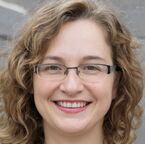In the metric system, radon concentration is expressed in Becquerels per cubic meter (Bq/m3). One Becquerel means one radioactive disintegration per second, and 4 pCi/L equals to 148 Bq/m3.
How do you convert BQ m3 to pCi L?
One Bq corresponds to one disintegration per second. One pCi/L is equivalent to 37 Bq/m3.
What is a high radon level Bq m3?
A generally accepted action level established by the World Health Organization, the WHO, is 100 Bq/m3, or 2.7 pCi/L. Homes or structures measuring higher are advised to take remedial action to lower radon levels. The WHO further advises an upper limit that should not be exceeded at 300 Bq/m3, or 8 pCi/L.
What is the highest acceptable radon level?
EPA recommends homes be fixed if the radon level is 4 pCi/L (picocuries per liter) or more. Because there is no known safe level of exposure to radon, EPA also recommends that Americans consider fixing their home for radon levels between 2 pCi/L and 4 pCi/L.
What is 4 pCi l in bq m3? – Related Questions
How do you calculate pCi L?
ER = WL X 100. pCi/L Plug in values: ER = 0.02 X 100 = 0.5 (or 50%) 4 This formula can also be used to convert from picoCuries/Liter to Working Levels, or vice versa.
How many Bq are in a pCi?
1 Picocurie [pCi] = 0.037 Becquerel [bq] – Measurement calculator that can be used to convert Picocurie to Becquerel, among others.
What does Bq m3 mean?
Devices that measure. concentrations of. radon gas. becquerels per cubic metre. (Bq/m3) (Canada)
How do I change from Becquerel to curie?
One curie (1 Ci) is equal to 3.7 × 1010 radioactive decays per second, which is roughly the amount of decays that occur in 1 gram of radium per second and is 3.7 × 1010 becquerels (Bq).
What is the value of 1 becquerel?
1 becquerel = 1 radioactive decay per second = 2.703×10–11 Ci.
How much becquerel is safe?
The World Health Organization recommends a limit of 10 becquerels of radioactive activity per litre of drinking water, equivalent to a dose of 0.1 millisieverts per year.
WHAT IS A becquerel equal to?
The unit of radioactive decay equal to one disintegration per second. The Becquerel is the basic unit of radioactivity used in the international system of radiation units, referred to as the “SI” units. 37 billion (3.7×1010) becquerels = 1 curie (Ci).
What is a high becquerel?
Becquerel is a unit of radioactivity and focuses on where radiation comes from. It is used to express the amount of radioactive materials contained in soil, foods, tap water, etc. The higher the value expressed in becquerels, the larger the radiation being emitted.
What does Bq mean in radiation?
One of three units used to measure radioactivity, which refers to the amount of ionizing radiation released when an element (such as uranium) spontaneously emits energy as a result of the radioactive decay (or disintegration) of an unstable atom.
How much radiation is lethal?
Above about 100 mSv, the probability of cancer (rather than the severity of illness) increases with dose. The estimated risk of fatal cancer is 5 of every 100 persons exposed to a dose of 1000 mSv (ie. if the normal incidence of fatal cancer were 25%, this dose would increase it to 30%).
How much radiation is in a banana?
Each banana can emit . 01 millirem (0.1 microsieverts) of radiation. This is a very small amount of radiation. To put that in context, you would need to eat about 100 bananas to receive the same amount of radiation exposure as you get each day in United States from natural radiation in the environment.
What are the 4 stages of radiation sickness?
Patients with acute radiation syndrome (ARS) classically go through four clinical phases: prodrome, latency, manifest illness, and either recovery or death. During the prodromal phase, they usually present with nausea, vomiting, fatigue, and even loss of consciousness at higher doses.
What is a safe level of radiation to live in?
The individual dose limit for radiation workers averaged over 5 years is 100 mSv, and for members of the general public, is 1 mSv per year.
How much radiation do you need to get sick?
Total body exposure of 100 roentgens/rad or 1 Gray unit (Gy) causes radiation sickness. Total body exposure of 400 roentgens/rad (or 4 Gy) causes radiation sickness and death in half of the individuals who are exposed.
What is considered high for radiation?
* Exposure to 100 mSv a year is the lowest level at which any increase in cancer risk is clearly evident. A cumulative 1,000 mSv (1 sievert) would probably cause a fatal cancer many years later in five out of every 100 persons exposed to it.



